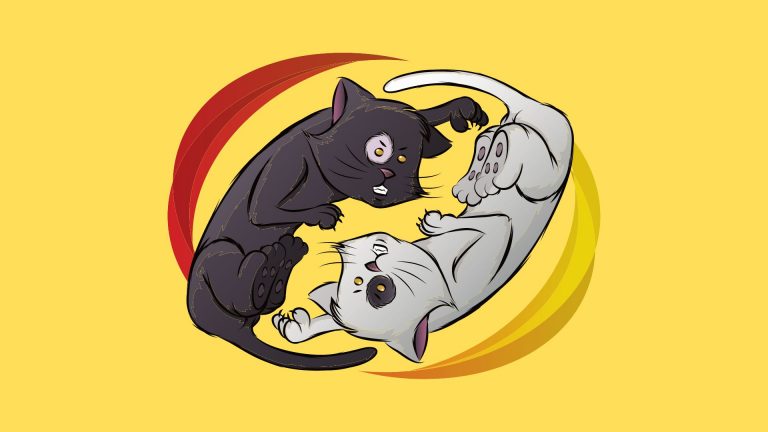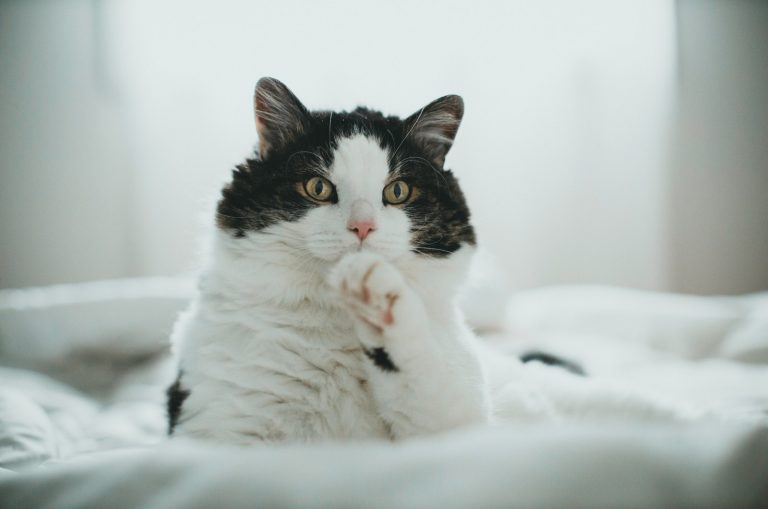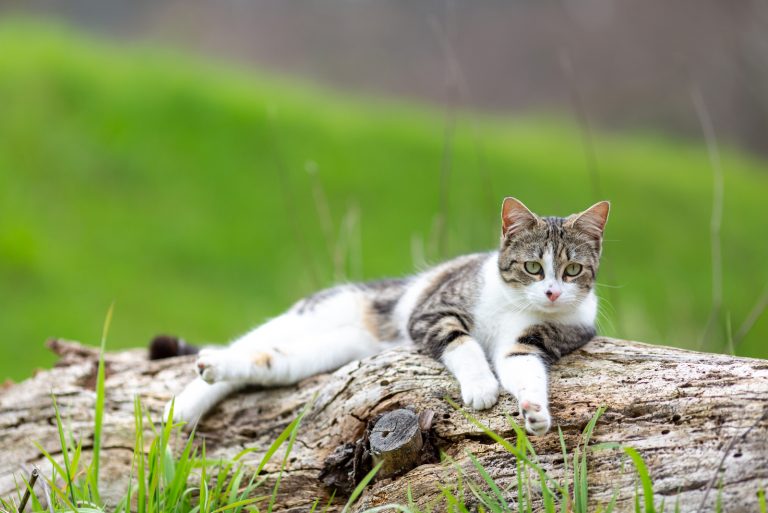Can A Cat Be Bipolar? Essential Feline Mental Health Facts

Are you curious about whether or not a cat can be bipolar? If so, you’re not alone! Many cat owners have wondered about this fascinating topic.
Cats can experience symptoms resembling bipolar disorder, such as excessive energy and activity, impulsivity, decreased need for sleep, low mood, loss of interest in activities, and changes in appetite and sleep patterns.
If your kitty is displaying these symptoms, does it mean you have a bipolar cat? Although it might seem logical to say yes, the answer is, in fact, no. Why? Keep on reading to find out!
Can A Cat Be Bipolar?
As far as I know, there have not been any documented cases of animals diagnosed with bipolar disorder.
Cats do not have the cognitive abilities or the same brain structure as humans, so they can’t develop a mental health condition like bipolar disorder.
However, cats can experience behavior changes similar to the symptoms of bipolar disorder in humans, which I will talk about briefly.
While animals may exhibit behaviors that are similar to some of the symptoms of bipolar disorder, such as changes in energy levels and activity, this is not the same thing as having the condition.
What Is Bipolar Disorder?

Bipolar disorder, also known as manic-depressive disorder, is a mental health condition characterized by extreme mood swings.
People with this condition experience intense emotional highs (mania or hypomania) and lows (depression). These mood swings can be very severe and can affect a person’s ability to carry out day-to-day activities.
Bipolar disorder can be treated with a combination of medications and therapy, and most people with the condition can manage their symptoms with proper treatment.
Can Animals Have Bipolar Disorder?
As far as we know, animals do not have the capacity for complex emotions or mental health conditions like bipolar disorder in the same way humans do.
Animals may have basic emotions, such as fear and happiness.
Still, they do not have the same cognitive abilities as humans, so it is not accurate to say that they can have a mental health condition like bipolar disorder.
Feline Behavior You Might Mistake For Bipolar Disorder
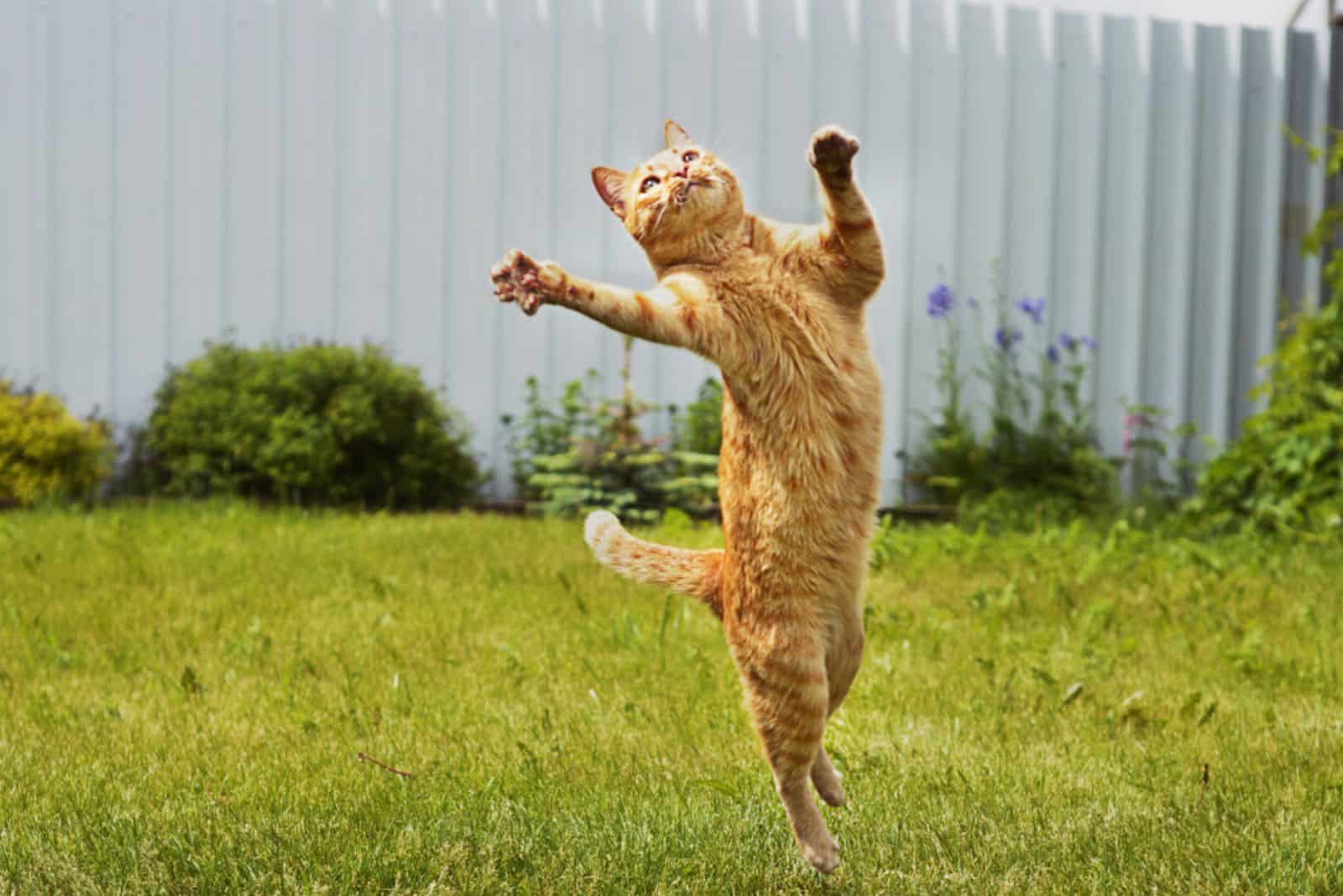
Some common symptoms of bipolar disorder in humans include sudden changes in energy levels, mood changes, changes in sleep patterns, changes in appetite and weight, changes in concentration and attention, and changes in behavior.
However, you might be able to notice the same symptoms in cats as well.
Some common feline behaviors that may be mistaken for bipolar disorder include:
• Playfulness And Hyperactivity
Cats are naturally playful, active animals and may exhibit periods of intense playfulness and hyperactivity. This is not the same as mania in humans with bipolar disorder, but it may be mistaken for it.
• Sleepiness And Lethargy
Cats also have periods of excessive sleeping and lethargy, during which they may sleep for long periods and have little energy. This can be mistaken for manic depression in humans with bipolar disorder.
• Changes In Appetite And Weight
Cats can experience changes in their appetite and weight and may eat more or less during different periods. This can be mistaken for the mood swings associated with bipolar disorder.
Note that even though these resemble symptoms of bipolar disorder, they’re also part of normal cat behavior.
Cats have a lot of quirks. One minute, your kitty might be cuddling in your lap and the next it might suddenly start hissing.
Sudden behavioral changes are symptoms of bipolar disorder, but does it mean your cuddly, aggressive feline has bipolar disorder? No.
What Might Be Causing My Cat’s Bipolar-Like Symptoms?

There could be several reasons why your cat is experiencing behavior changes. Cats can develop behavior problems for various reasons, including medical conditions, environmental changes, and even daily routines.
Some common reasons for behavior changes in cats include:
1. Medical Conditions
Cats can develop behavior changes due to medical conditions, such as kidney disease, hyperthyroidism, and cognitive dysfunction.
More About Hyperthyroidism
Hyperthyroidism is a common endocrine disorder in cats, typically affecting older animals. It is caused by the overproduction of the hormone thyroxine by the thyroid gland.
Symptoms of hyperthyroidism in cats can include weight loss, increased appetite, increased thirst and urination, and hyperactivity.
Hyperthyroidism can lead to serious complications, such as heart problems and liver failure, if left untreated.
More About Feline Cognitive Dysfunction
Feline cognitive dysfunction is a condition that affects older cats and is similar to Alzheimer’s disease in humans.
It is caused by changes in the brain that lead to a decline in cognitive function, including memory, learning, and problem-solving abilities.
Symptoms of feline cognitive dysfunction include disorientation, lack of interaction with people and other pets, sleep disturbances, and changes in the cat’s behavior and routine.
2. Lack Of Stimulation
A lack of stimulation can be harmful to cats, both mentally and physically. Cats are intelligent, curious animals who need to be mentally and physically stimulated to stay healthy and happy.
Cats can become bored and inactive without enough stimulation, leading to obesity and other health problems.
Cat owners must provide their cats with plenty of toys, scratching posts, and other objects to play with, as well as opportunities for exercise and exploration.
This can help keep their minds and bodies active and prevent them from becoming bored and inactive.
3. Changes In The Environment
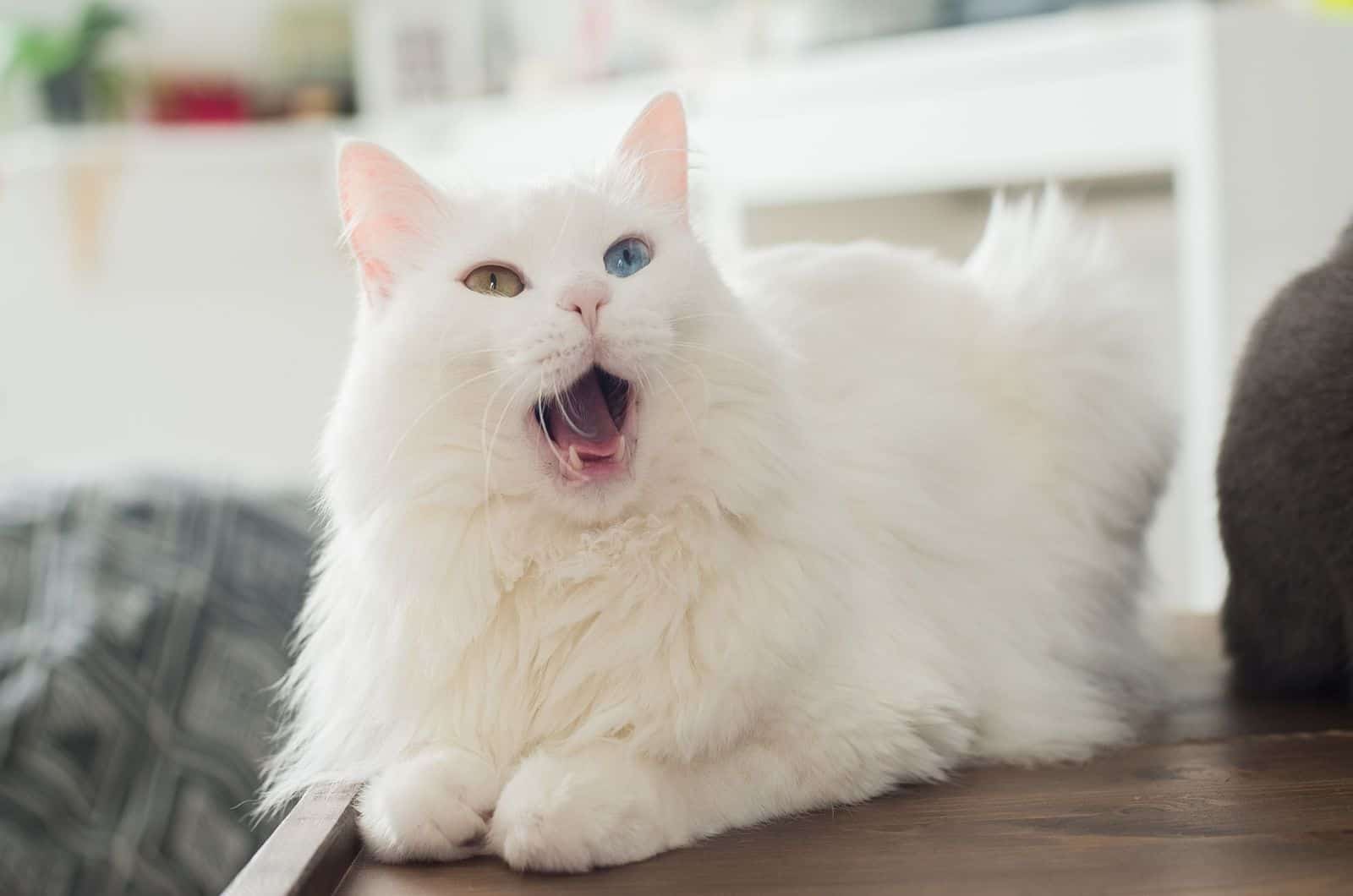
Cats are sensitive to changes in their environment, which can affect their behavior in various ways.
For example, a change in the layout of a cat’s home, or the introduction of new furniture, can cause a cat to become anxious or confused.
4. Changes In Routine
Changes in a cat’s routine, such as changing their daily schedule or introducing new people or pets into the household, can cause the cat to become anxious or fearful. This can lead to changes in the cat’s behavior.
Cats can become stressed or anxious when their daily routine is disrupted, such as when a new person or pet is introduced into the household.
5. Age-Related Changes
As cats age, they may experience changes in their behavior due to the natural aging process and the effects of aging on the brain and body.
These changes can include a decrease in activity level, decreased social interaction with people and other pets, and changes in sleep patterns.
Older cats may also experience cognitive decline, which can cause symptoms such as disorientation, vocalization, and changes in the cat’s behavior and routine.
6. Genetics
Genetics can also play a role in a cat’s level of hyperactivity.
Some breeds of domestic cats, such as Siamese, Oriental, and Abyssinian cats, are known for their high energy levels and temperament and may be more prone to hyperactivity.
What Should You Do About It?
If your cat is experiencing behavior changes, it’s important to take it to the veterinarian to rule out any underlying medical conditions.
Once any medical issues have been ruled out, you and your veterinarian can work together to determine the cause of your cat’s behavior changes and develop a plan to address them.
It’s important to work closely with your veterinarian to determine the cause of your cat’s behavior changes and develop a plan to address them.
This may involve changing your cat’s environment, adjusting its routine, or providing them with medication or other forms of treatment.
Mental Health Struggles Both Cats And Humans Can Suffer From (But Not Bipolarism)
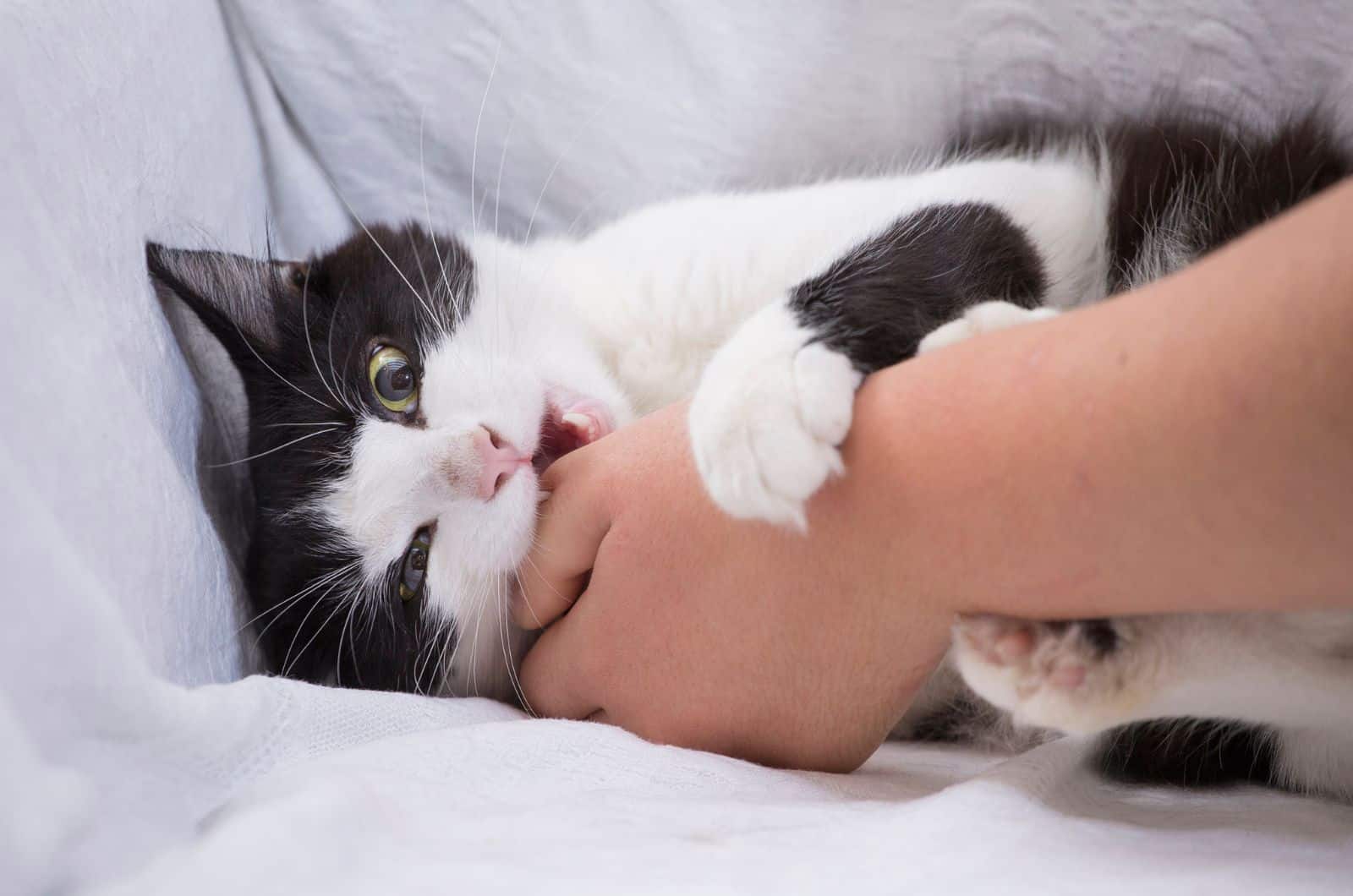
While cats cannot be diagnosed with the same mental health conditions as humans, they can still experience various behavioral and emotional issues.
Some common mental health struggles that both cats and humans can suffer from include:
Depression
Cats can also experience depression, which can be seen in changes to appetite, activity levels, and sleep patterns.
Anxiety
Cats, like humans, can experience anxiety, which can manifest in various behaviors, such as excessive grooming, hiding, and vocalization.
Stress
Cats can become stressed in response to changes in their environment or routine, which can cause a range of behaviors, such as destructive behavior, defecating outside of the litter box, excessive grooming or licking, hiding or avoiding social interaction, etc.
OCD
Both cats and humans can experience obsessive-compulsive disorder (OCD). In cats, OCD can manifest as excessive grooming, meowing, and other repetitive behaviors.
PTSD
Symptoms of PTSD in cats can include changes in behavior, such as becoming more aggressive or withdrawn, as well as changes in physical health, such as loss of appetite or excessive grooming.
Binge Eating
While binge eating disorder is more commonly diagnosed in humans, it can also affect cats, especially if they have access to a large amount of food and can eat as much as they want.
Pica
Both cats and humans can have pica, which is the condition of having an appetite for non-food items.
Pica disorder is characterized by a desire to eat substances that are not typically considered food, such as dirt, paper, or soap.
Important Note
While these mental health struggles may be similar to those experienced by humans, it’s important to remember that cats have unique needs and may require different forms of treatment.
Sometimes, your cat’s symptoms can be reduced using a pheromone diffuser. At other times, your cat may be suffering from a serious medical condition (such as hyperthyroidism) or a neurological disorder and needs professional help.
It’s best to talk to your veterinarian (or an animal behaviorist) if you are concerned about your cat’s behavior or emotional well-being.
They can assist you and guide you in how to address any behavioral or emotional issues your cat may be experiencing.
Wrapping Up

While cats can experience behavior changes and mood swings, these are not the same as the symptoms of bipolar disorder in humans.
Cats have unique mental health needs and can experience various behavioral and emotional issues, but they cannot be diagnosed with bipolar disorder.
If you are concerned about your cat’s wellness, you should consult your veterinarian for guidance.
They can help you determine the cause of your cat’s behavior changes and advise you on how to address them.
If you’ve liked this article, you might find these interesting as well:
• Do Cats With Down Syndrome Exist? A Popular Misconception
• Can Cats Have Autism? This Is What You Need To Know
• Do Cats Get Headaches Or Migraines? What Do The Experts Say?


